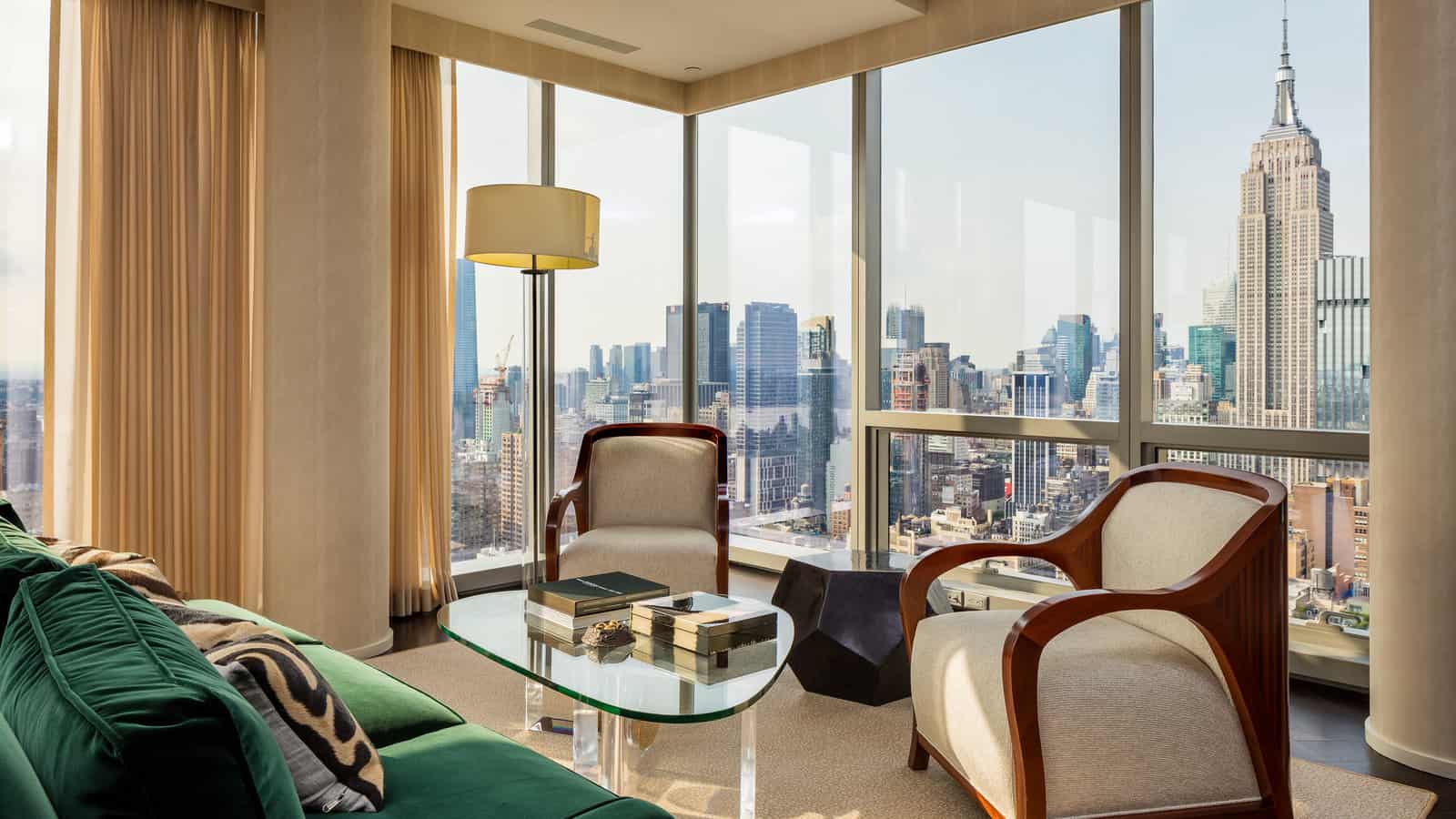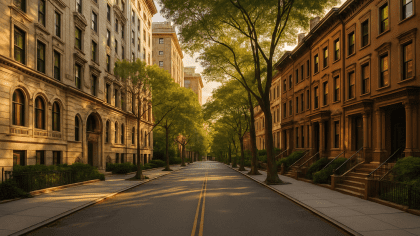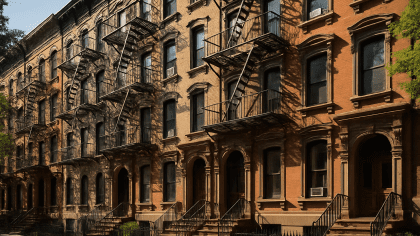Furnishing an entire apartment from scratch can quickly become an expensive endeavor. From furniture and appliances down to the smallest details, outfitting a home requires thorough planning and budgeting. This comprehensive guide examines the typical costs associated with fully furnishing an apartment across all rooms and provides tips for keeping expenses in check. Use it to help estimate both necessities and extras as you prepare to create your ideal living space.
Cost of Furniture
The furniture you choose forms the foundation for styling your apartment. Bedroom, living room, and dining sets represent major investments that significantly impact everyone total spend.
Bedroom Furniture
A complete family bedroom set with a bed frame, headboard, mattress, box spring, nightstand, and dresser averages $1,500-$2,500. Opt for a basic metal or wood frame bed with simpler nightstands to save. Expect to spend $800-$1,200 for a quality queen-size mattress and box spring.
Don’t forget the often overlooked but essential bedroom pieces like side tables, benches, ottomans, and armoires that provide valuable storage and surface space. Place them strategically to maximize function. Bedding is another purchase that adds up quickly. Budget $100-$300 for bedding sets including sheets, comforters, shams, and decorative pillows.
Living Room Furniture
A full living room set including a sofa, loveseat, coffee table, end tables, and TV stand generally runs $2,000-$4,000. Choose a smaller sofa with fewer pieces to reduce costs. Budget $1,000-$2,000 alone for a durable, comfortable sofa.
People often neglect to measure thoroughly first, so be sure to take room dimensions beforehand and sketch out furniture placement options. This prevents purchasing items that won’t actually fit the space. Don’t forget handy accent pieces like side tables, ottomans, magazine racks, and decorative chests that lend convenient storage.
Dining Room Furniture
For a dining table with four chairs, the budget will be somewhere of $500-$1,500 depending on materials. A bench instead of chairs saves space and money. Add a buffet, hutch, or bar cart for serving needs. To maximize seating in studio and one-bedroom apartments, consider a counter height dining set that can double as extra counter workspace. For small dining areas, nesting tables and stackable chairs save room when not in use.
Entryway/Hall Furniture
Furnish entryways and halls affordably with console tables ($100-$300), benches ($250-$500), and mirrors ($50+). Coat racks and umbrella stands are useful additions. For tight entryways, look for narrow console tables under 12 inches deep and coat racks that mount flush to the wall. Corner benches maximize seating while preserving floor space in small halls.
Home Office Furniture
Create a home office with a desk ($100-$300), office chair ($100-$300), shelving unit ($100+), and small filing cabinet ($100-$200). Look for basic pieces without elaborate details. To delineate an office area without a separate room, use screens or bookshelves to partition the space. Opt for a small drop leaf desk that tucks against the wall or folds up when not in use.
Cost of Appliances
Appliances have a major impact on apartment functionality and habitability. Focus spending on the kitchen and laundry machines, then add supplemental appliances as desired.
Major Kitchen Appliances
Allow $2,000-$5,000 to outfit a kitchen with good quality refrigerator, stove/oven, dishwasher, and microwave. Spending $1,000-$2,000 per appliance ensures solid performance and longevity. For rental apartments, check if appliances are included or if you must provide your own. Ask about energy-efficiency rebate programs from providers.
Take accurate measurements and create a rough layout before shopping so appliances fit perfectly within existing cabinetry and hookups. This avoids costly return hassles. Look for smaller or narrower models if your kitchen is tight on space. Request free removal of old appliances upon delivery of new ones.
Small Kitchen Appliances
Useful small appliances like a coffee maker, toaster, blender, and slow cooker add convenience. Allocate $300-$500 for these. Avoid non-essentials like panini presses and sandwich makers. Stick to the basics first like a coffeemaker, toaster, and blender which get daily use. Then supplement with specialty appliances over time as needs arise and budget allows.
Washer/Dryer
Budget $800-$1,200 for a washer and dryer set. Select front-loading models which are more water and energy efficient. Stackable units work well for small spaces. Verify connections and electrical supply are compatible before purchasing units. Some apartments have gas while others are electric only. Look for rebates on ENERGY STAR certified models.
Electronics
A 40-55 inch 4K TV costs $250-$700. Expect to spend $100-$300 on a quality surround sound system or soundbar. Smart home devices like Amazon Echo and Google Home Mini make useful additions for $25-$100 each. Check TV mount compatibility if wall mounting, and measure desired viewing distance to size appropriately. Built-in streaming capability eliminates the need for add-on streaming players.
Cost of Decorations
Decor like wall art, plants, mirrors, and accessories personalize your space. Stick to a few key items in each room to decorate affordably.
Wall Decor
Include a statement piece like a gallery wall or large canvas print ($100-$300) in the living room along with budget-friendly decor like prints ($20-$50 each) and wall shelves ($50+). When choosing wall decor, opt for a cohesive color palette and style that flows from room to room. Mix media like framed prints, canvas art, metal signs, and photos for interest.
Plants
Liven up any room with a few low-maintenance houseplants. Small potted plants range from $5-$30 each. Invest in a nice planter to display them in. Greenery instantly boosts ambiance and a sense of tranquility. Place plants in window sills where they can access sunlight and avoid leaf burn from lamps.
Mirrors
Hang an eye-catching mirror ($50-$150) in the entryway or above the living room fireplace for visual interest. Avoid over-decorating with too many mirrors. Strategically place mirrors to enlarge small spaces and create depth. In entryways, a mirror helps guests check their appearance before going out.
Accessories
Carefully choose a few decorative accessories for tables, shelves, walls, and floors. Candles, vases, small sculptures, pillows, and throws add flair for $5-$50 per item. Start with versatile neutral pieces like ceramic vases, bowls, trays, and boxes. Then incorporate pops of color and personality with patterned pillows, art, and other accents.
Cost of Flooring
Fresh flooring ties rooms together visually and makes a big impact. Evaluate both installation and material costs as you select options.
Hardwood Floors
Gorgeous hardwood floors cost $4-$12 per square foot installed. More affordable wood-look vinyl plank flooring runs $2-$5 per square foot installed. Refinishing existing hardwoods is often cheaper than full replacement. For rental units, ask about regulations for installing new flooring over existing floors.
Tile Floors
Ceramic or porcelain tile options span $2-$20 per square foot. Budget additional labor costs for installation. Select durable grout. Look for tile styles and patterns that disguise dirty grout lines in high traffic areas. Hire an experienced installer for best results.
Carpeting
Broadloom carpeting starts around $1-$4 per square foot for materials. Include $1-$3 per square foot for professional installation. Prioritize high-traffic areas. Neutral short pile carpet hides dirt well and withstands heavy foot traffic. Schedule regular professional steam cleaning according to manufacturer directions.
Area Rugs
Incorporate stylish area rugs strategically in living spaces and bedrooms. Prices range widely, but plan on spending $100-$500 for an average 8×10 rug. Layer rugs over wall-to-wall carpeting or hard floors to define specific areas like living rooms. For high-traffic zones like entryways, opt for durable, easy-clean synthetic rug fibers.
Cost of Window Treatments
Window treatments complete the look and provide privacy. Balance function and cost when selecting yours.
Curtains
Curtain panels from big box stores cost $20-$50 per panel. For custom-made, expect to spend $50-$100 per window. Valances or sheers add elegant touches. Measure windows carefully and account for optimal airflow around curtains. Mount curtain rods securely into wall studs, not just drywall.
Blinds
Durable vinyl or aluminum blinds cost approximately $20-$50 per window. More expensive wood or faux wood blinds run $50-$100 per window. Consider cordless blinds or those with cord cleats for enhanced child safety. Layer curtains over blinds for a finished look.
Shades
Budget $100+ per window for higher end shades. Affordable options like vinyl roll-up shades start around $20 each. Layer curtains over shades for softness. Automated smart shades offer scheduling, voice activation, and other handy features.
Cost of Lighting
Proper lighting makes spaces functional and sets the right ambiance. Mix light fixture types for sufficient brightness.
Ceiling Lights
Include $100-$300 per room in your budget for attractive ceiling light fixtures. Prioritize the kitchen, dining, and bathroom for ample lighting. Stick to basic ceiling light fixtures, then splurge on trendy pendant and chandelier styles later as budget allows.
Table & Floor Lamps
Supplement ceiling lights with table and floor lamps throughout. Allow $50-$150 for lamps in each bedroom, living area, and office space. Opt for smart bulbs to control lighting by voice or app. Place lamps strategically near seating areas for reading.
Outdoor Lighting
Illuminate balconies, patios, and entryways with exterior wall sconces ($50+ each) and outdoor-rated string lights ($10+ per strand). Use motion sensor lights for convenience and security around entryways. For patios, look for lanterns and string lights that provide ambiance.
Cost of Kitchenware
Properly equipping your kitchen adds up with all the gadgets, appliances, cookware, utensils, and more needed. Set a realistic number for this substantial category.
Cookware
A cookware set with pots, pans, and lids averages $200-$500. Plus, include key extras like baking sheets, muffin tins, roasting pans, and casserole dishes for $5-$20 each. Start with essential, frequently used pans. Supplement specialty pieces over time.
Bakeware
Allow $30-$75 for a set of basic baking dishes, muffin tins, and cooling racks. Add specialized pans for cakes and pastries later. Focus first on pans for cookies, cakes, brownies, and other everyday baked goods. Extend your collection on sale holidays if budget is tight.
Kitchen Utensils
A starter utensil set with essential mixturing and serving pieces costs $20-$50. Then supplement with useful tools like whisks, peelers, graters, and cutting boards. Opt for nylon or silicone utensils that are heat resistant and sturdy. Invest in a knife block or magnetic strip and quality knives.
Dishes & Glassware
Dinnerware, drinkware, and flatware together average $200-$500 for a basic four-person set. Mix and match styles for interest. Start with an inexpensive set from a discount retailer to save upfront. Replace pieces with fancier ones over time.
Kitchen Linens
Don’t forget kitchen linens like dish towels, pot holders, and cloth napkins. Stock up on these inexpensive but useful items ($1-$5 each). Choose ones that coordinate with your color scheme.
Cost of Bathroom Accessories
Bathrooms require lots of accents and organizational items for functionality. Build up collections over time.
Bath Accessories
Include $50-$100 for bath mats, shower curtains, wastebaskets, and other bath essentials per bathroom. Luxury towels cost $10-$50 each. Buy bath mats and shower curtains first, then splurge on nicer towels and upgrades later.
Storage
Effective bathroom storage starts around $15-$30 for shower caddies, cabinet organizers, and freestanding shelves. Built-in medicine cabinets also add space. Look for stackable or hanging storage options to maximize vertical room. Install pull-out cabinet organizers for efficiency.
Decor
Framed prints and wall shelves infuse personality and provide display space. Limit other accessories to preserve a clean, uncluttered look. Use wall shelves in lieu of counter clutter for a tidier bath aesthetic. Coordinate prints with your color scheme.
Cost of Outdoor Furniture
Create a functional outdoor oasis by budgeting appropriately for deck or patio furnishings.
Patio Furniture Set
A table with four chairs or a loveseat starts around $300-$600 for resin options. Teak raises cost to $1,500+. Consider sectionals for small spaces. Measure the patio when shopping and recreate the layout with furniture cutouts to ensure everything fits.
Patio Accessories
Stow cushions ($50+ each), umbrellas ($100+), and fire pits or chimineas ($200+) safely when not in use. Potted plants, string lights, and lanterns boost ambiance affordably. Choose weather-resistant cushions with washable covers. Anchor umbrella bases for stability.
Grills & Patio Refrigerators
Basic charcoal kettle grills cost $100+, whilegas grills start around $200. Compact outdoor refrigerators run $300+. Splurge on these later to expand functionality. Grill close to the house for safety.
Cost of Cleaning Supplies
Don’t let cleaning supplies catch you off guard. Estimate spending based on apartment size and surfaces.
Cleaners
Expect to spend $100+ stocking multipurpose and specialty cleaners for floors, bathrooms, windows, kitchens, and laundry. Refill as needed. Buy all-purpose cleaners first, then supplement with specific ones for stain removal, disinfecting, and surfaces like glass and granite.
Equipment
Equip each bathroom with plungers, scrub brushes, and wastebaskets ($20+). Mops, brooms, dustpans, and vacuums cover general cleaning needs ($50+ each). Choose versatile tools like extendable dusters and convertible mops appropriate for your flooring.
Reusable Supplies
Microfiber cloths, reusable mop pads, and other washable items minimize waste. Maintain supply of rags, paper towels, and more for messy jobs. Stock up on laundry detergent, disinfecting wipes, and other consumables when they go on sale.
Organization
Keep cleaning supplies organized with caddies, bins, and shelves for easy access. Label containers clearly. Have a well-stocked cleaning closet to avoid running out of necessities.
Seeking the Ideal NYC Room?
Imagine not just an ordinary room, but a lively community waiting to be called ‘home’. SharedEasy Coliving welcomes you to a new way of living! Discover our stylish, fully-equipped rooms, designed to complement your dynamic New York life.
Make Your Move Now:
Tap “Get Offer” or dial +1 929-575-4767 to explore how SharedEasy can elevate your living experience. Enjoy the convenience of flexible leases, inclusive amenities, and rooms prepped for immediate move-in. Your vibrant NYC community is calling. Become part of the SharedEasy family today!





